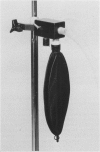Abstract
Numerous potential problems have been associated with long term or occupational exposure to both nitrous oxide and halothane. Despite the lack of firmly established cause-and-effect relationships, particularly in humans, it would seem prudent to use techniques that minimize operator exposure. With this in mind, a scavenging system for use in both conscious sedation and general anesthetic techniques was developed which fulfills the requirements of both general dentists as well as those administering general anesthesia. This paper describes this system and its adaptation to the commonly used Magill circuit. It also briefly reviews the factors involved in potential toxicity caused by long term exposure to nitrous oxide and halothane.
Full text
PDF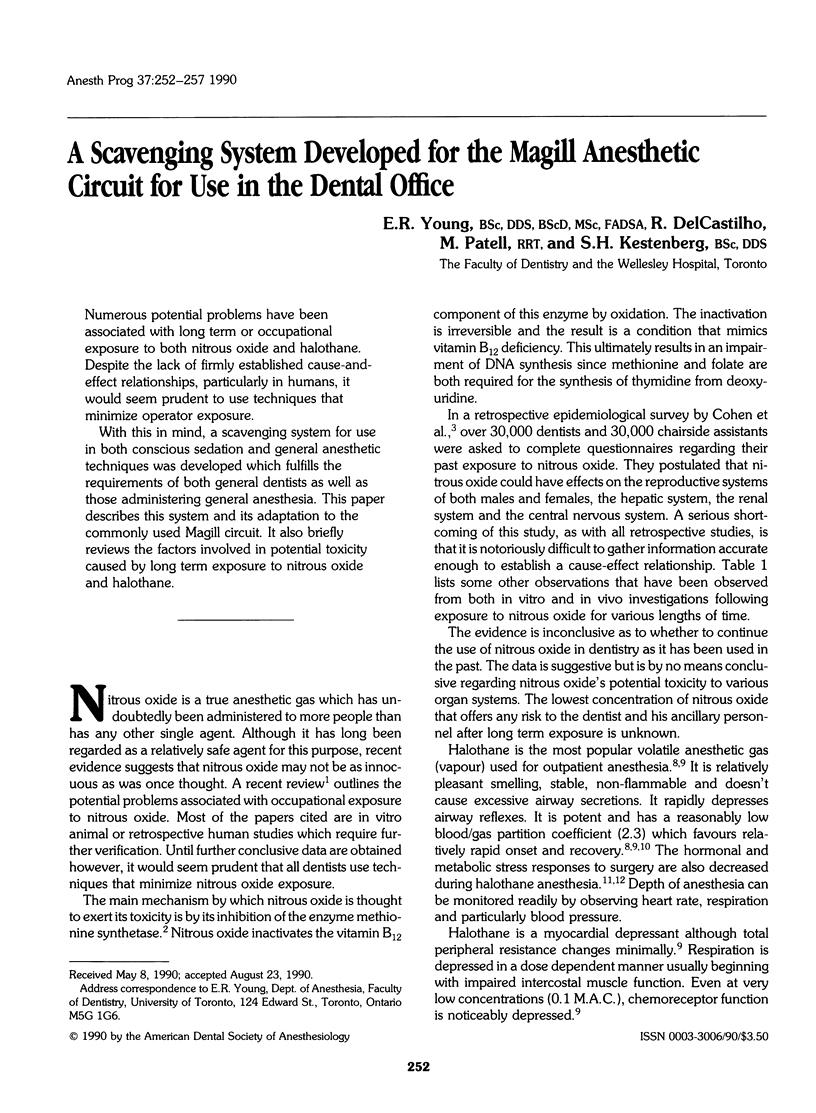
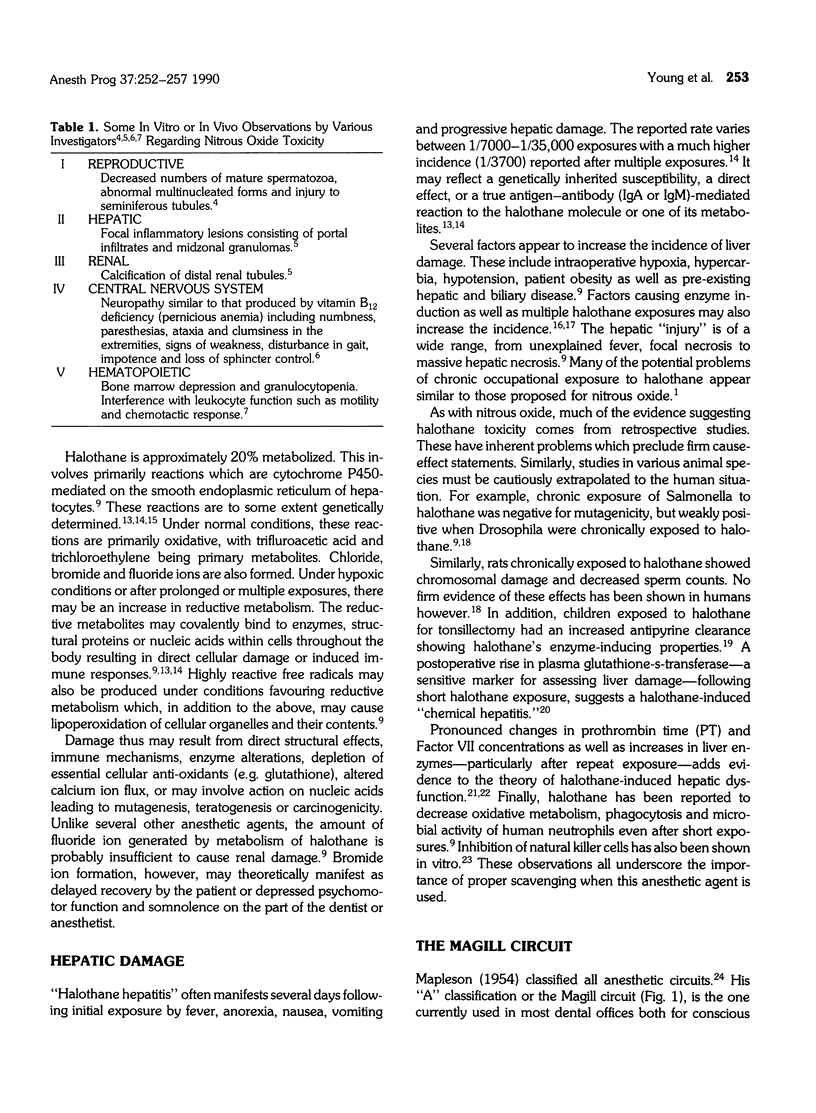
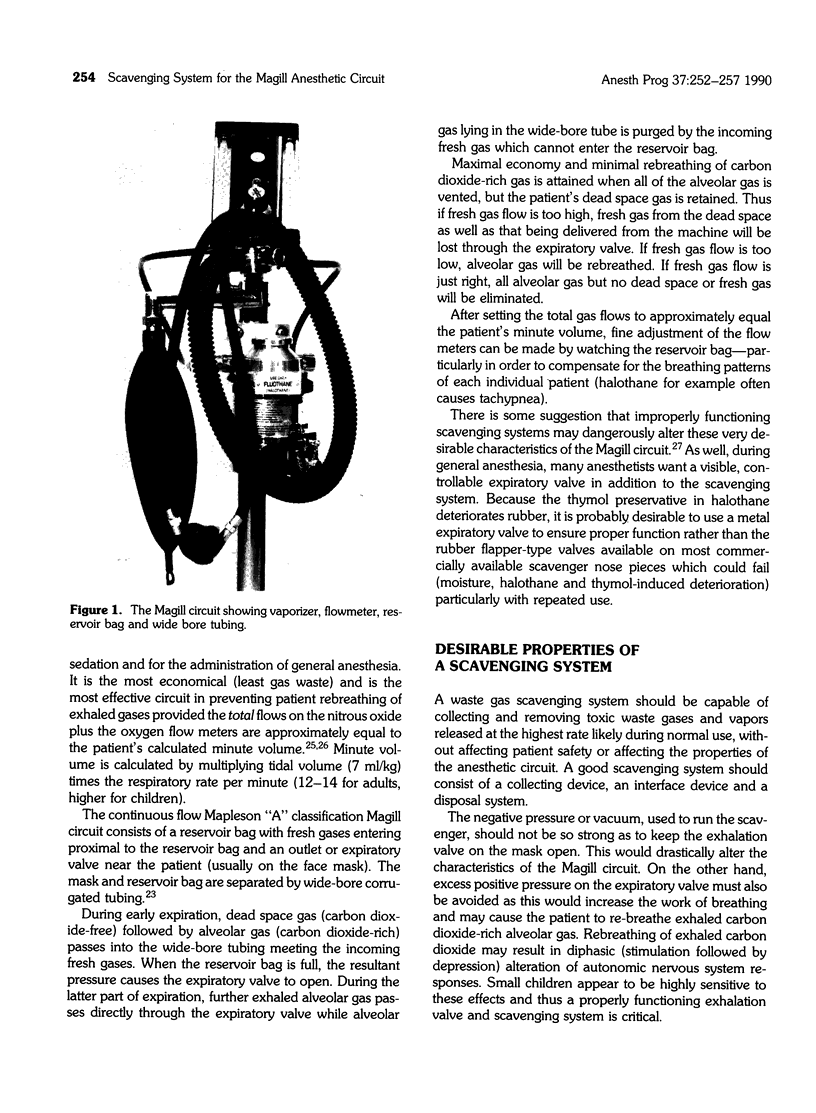
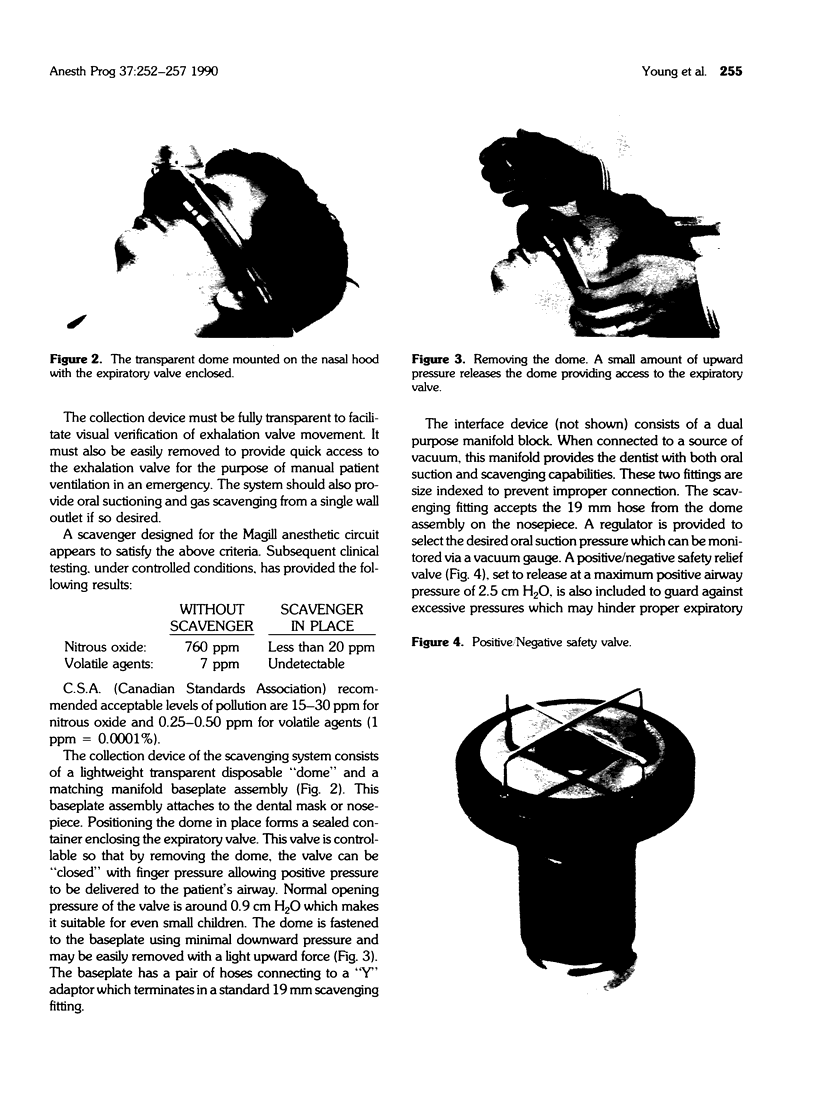
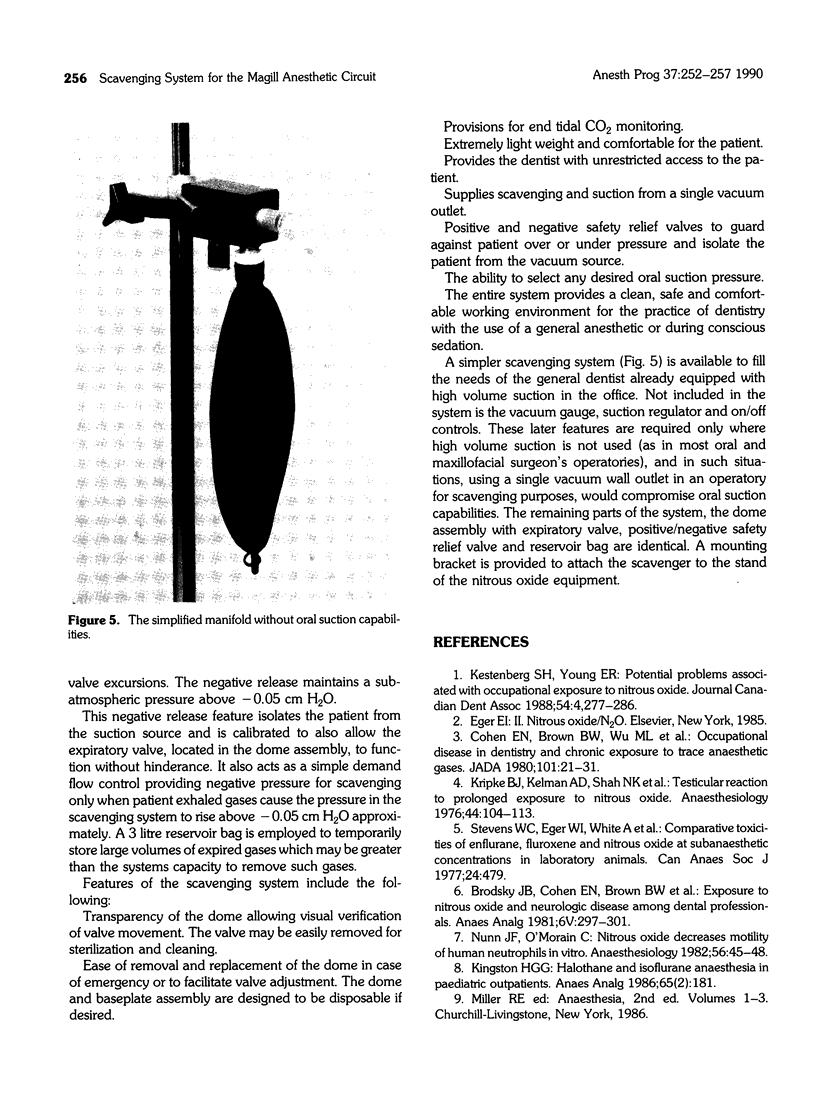
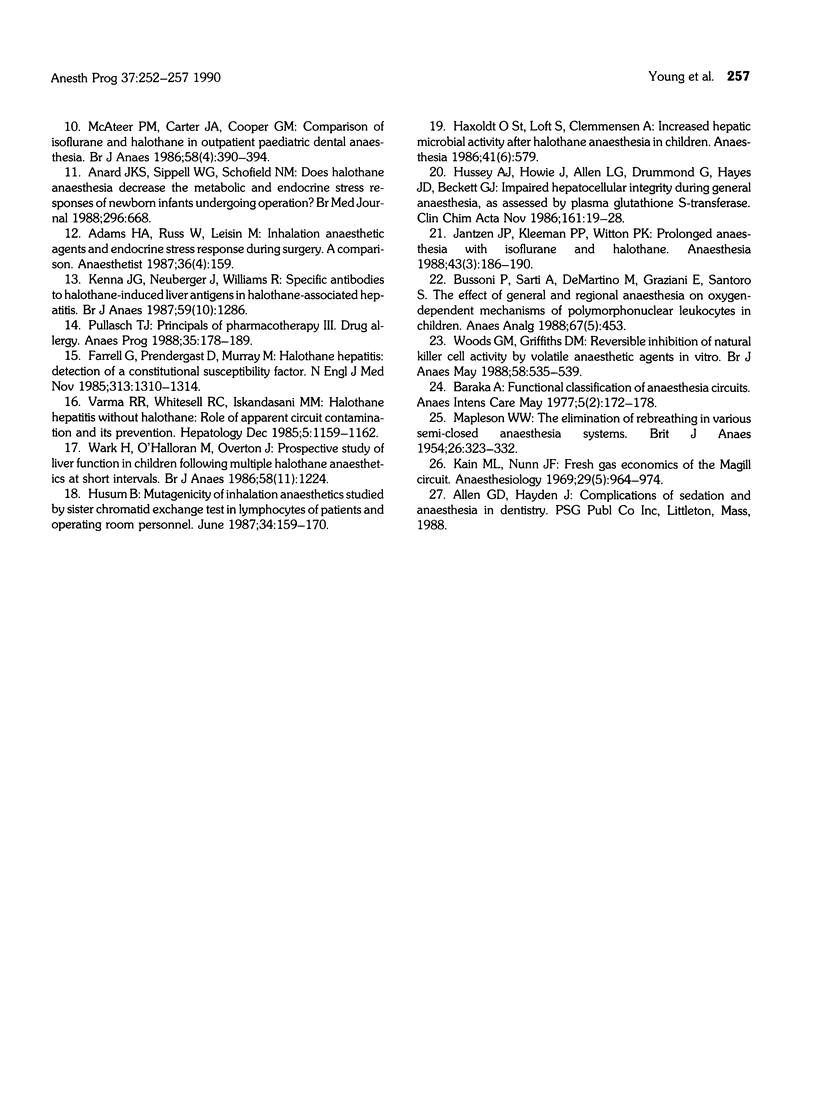
Images in this article
Selected References
These references are in PubMed. This may not be the complete list of references from this article.
- Adams H. A., Russ W., Leisin M., Börner U., Gips H., Hempelmann G. Untersuchungen zur endokrinen Stress-Antwort bei Halothan-, Enfluran- und Isofluran-Narkosen für unfallchirurgische Eingriffe. Anaesthesist. 1987 Apr;36(4):159–165. [PubMed] [Google Scholar]
- Anand K. J., Sippell W. G., Schofield N. M., Aynsley-Green A. Does halothane anaesthesia decrease the metabolic and endocrine stress responses of newborn infants undergoing operation? Br Med J (Clin Res Ed) 1988 Mar 5;296(6623):668–672. doi: 10.1136/bmj.296.6623.668. [DOI] [PMC free article] [PubMed] [Google Scholar]
- Baraka A. Functional classification of anaesthesia circuits. Anaesth Intensive Care. 1977 May;5(2):172–178. doi: 10.1177/0310057X7700500217. [DOI] [PubMed] [Google Scholar]
- Brodsky J. B., Cohen E. N., Brown B. W., Jr, Wu M. L., Whitcher C. E. Exposure to nitrous oxide and neurologic disease among dental professionals. Anesth Analg. 1981 May;60(5):297–301. [PubMed] [Google Scholar]
- Busoni P., Sarti A., De Martino M., Graziani E., Santoro S. The effect of general and regional anesthesia on oxygen-dependent microbicidal mechanisms of polymorphonuclear leukocytes in children. Anesth Analg. 1988 May;67(5):453–456. [PubMed] [Google Scholar]
- Cohen E. N., Gift H. C., Brown B. W., Greenfield W., Wu M. L., Jones T. W., Whitcher C. E., Driscoll E. J., Brodsky J. B. Occupational disease in dentistry and chronic exposure to trace anesthetic gases. J Am Dent Assoc. 1980 Jul;101(1):21–31. doi: 10.14219/jada.archive.1980.0345. [DOI] [PubMed] [Google Scholar]
- Farrell G., Prendergast D., Murray M. Halothane hepatitis. Detection of a constitutional susceptibility factor. N Engl J Med. 1985 Nov 21;313(21):1310–1314. doi: 10.1056/NEJM198511213132102. [DOI] [PubMed] [Google Scholar]
- Hussey A. J., Howie J., Allan L. G., Drummond G., Hayes J. D., Beckett G. J. Impaired hepatocellular integrity during general anaesthesia, as assessed by measurement of plasma glutathione S-transferase. Clin Chim Acta. 1986 Nov 30;161(1):19–28. doi: 10.1016/0009-8981(86)90259-7. [DOI] [PubMed] [Google Scholar]
- Husum B. Mutagenicity of inhalation anaesthetics studied by the sister chromatid exchange test in lymphocytes of patients and operating room personnel. Dan Med Bull. 1987 Jun;34(3):159–170. [PubMed] [Google Scholar]
- Jantzen J. P., Kleemann P. P., Witton P. K., Mertzlufft F., Klein A. M., Dick W. F. Prolonged anaesthesia with isoflurane and halothane. Effects on hepatic function. Anaesthesia. 1988 Mar;43(3):186–189. doi: 10.1111/j.1365-2044.1988.tb05536.x. [DOI] [PubMed] [Google Scholar]
- Kain M. L., Nunn J. F. Fresh gas economics of the Magill circuit. Anesthesiology. 1968 Sep-Oct;29(5):964–974. doi: 10.1097/00000542-196809000-00021. [DOI] [PubMed] [Google Scholar]
- Kenna J. G., Neuberger J., Williams R. Specific antibodies to halothane-induced liver antigens in halothane-associated hepatitis. Br J Anaesth. 1987 Oct;59(10):1286–1290. doi: 10.1093/bja/59.10.1286. [DOI] [PubMed] [Google Scholar]
- Kestenberg S. H., Young E. R. Potential problems associated with occupational exposure to nitrous oxide. J Can Dent Assoc. 1988 Apr;54(4):277–286. [PubMed] [Google Scholar]
- Kingston H. G. Halothane and isoflurane anesthesia in pediatric outpatients. Anesth Analg. 1986 Feb;65(2):181–184. [PubMed] [Google Scholar]
- Kripke B. J., Kelman A. D., Shah N. K., Balogh K., Handler A. H. Testicular reaction to prolonged exposure to nitrous oxide. Anesthesiology. 1976 Feb;44(2):104–113. doi: 10.1097/00000542-197602000-00002. [DOI] [PubMed] [Google Scholar]
- MAPLESON W. W. The elimination of rebreathing in various semi-closed anaesthetic systems. Br J Anaesth. 1954 Sep;26(5):323–332. doi: 10.1093/bja/26.5.323. [DOI] [PubMed] [Google Scholar]
- McAteer P. M., Carter J. A., Cooper G. M., Prys-Roberts C. Comparison of isoflurane and halothane in outpatient paediatric dental anaesthesia. Br J Anaesth. 1986 Apr;58(4):390–393. doi: 10.1093/bja/58.4.390. [DOI] [PubMed] [Google Scholar]
- Nunn J. F., O'Moráin C. Nitrous oxide decreases motility of human neutrophils in vitro. Anesthesiology. 1982 Jan;56(1):45–48. doi: 10.1097/00000542-198201000-00010. [DOI] [PubMed] [Google Scholar]
- St Haxholdt O., Loft S., Clemmensen A., Hjortsø E. Increased hepatic microsomal activity after halothane anaesthesia in children. Anaesthesia. 1986 Jun;41(6):579–581. doi: 10.1111/j.1365-2044.1986.tb13046.x. [DOI] [PubMed] [Google Scholar]
- Stevens W. C., Eger E. I., 2nd, White A., Biava C. G., Gibbons R. D., Shargel R. Comparative toxicities of enflurane, fluroxene and nitrous oxide at subanaesthetic concentrations in laboratory animals. Can Anaesth Soc J. 1977 Jul;24(4):479–490. doi: 10.1007/BF03005452. [DOI] [PubMed] [Google Scholar]
- Varma R. R., Whitesell R. C., Iskandarani M. M. Halothane hepatitis without halothane: role of inapparent circuit contamination and its prevention. Hepatology. 1985 Nov-Dec;5(6):1159–1162. doi: 10.1002/hep.1840050616. [DOI] [PubMed] [Google Scholar]
- Wark H., O'Halloran M., Overton J. Prospective study of liver function in children following multiple halothane anaesthetics at short intervals. Br J Anaesth. 1986 Nov;58(11):1224–1228. doi: 10.1093/bja/58.11.1224. [DOI] [PubMed] [Google Scholar]
- Woods G. M., Griffiths D. M. Reversible inhibition of natural killer cell activity by volatile anaesthetic agents in vitro. Br J Anaesth. 1986 May;58(5):535–539. doi: 10.1093/bja/58.5.535. [DOI] [PubMed] [Google Scholar]







